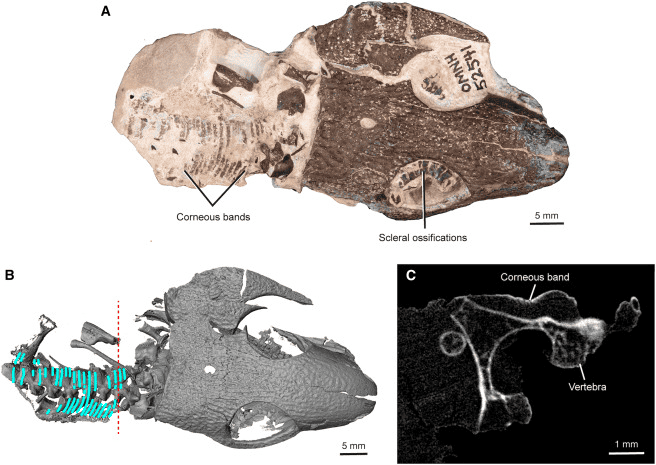290 Million Year Old Skin Fossil Discovered

Paleontologists have discovered (using the process of carbon dating) a 290 million-year-old fossil of skin deep within an Oklahoma cave. The discovery is now the earliest known example of a fossil from an amniote by a full 21 million years.
Amniotes are a large classification of animals that make up the vast majority of living terrestrial and semiaquatic vertebrates. Amniotes evolved from amphibian ancestors during the Carboniferous period, leading researchers to believe the animal who wore the skin fossil they fou

nd would have been a reptile with a rough skin surface similar to that of a crocodilian animal today.
The vast importance and function of the skin make the discovery of a skin fossil something special, rare, and very important when working to piece together the evolutionary history of the animal.
Ethan Mooney of the University of Toronto was responsible for leading the research done on the newly discovered skin fossil. He stated within his review of the project that this type of find is so exceptional because of the opportunity it presents to take a glimpse way back into time.
Given that some parts of the body are more easily preserved than others, you don’t typically find skin fossils today. Bones take the longest to break down, accounting for the large amount of bone fossils paleontologists discover on a regular occasion.
However, skin is usually one of the first things to go when an animal is returned to the earth. The soft tissue is fragile – skin, internal organs, and connective tissues typically deteriorate before the stone has a chance to work its magic and create a fossil.
Sometimes, though, the conditions are perfect for the preservation of those soft tissues, and you get lucky. Fortunately for Ethan Mooney and his team, the caves of Richards Spur in Oklahoma provide just the right environment needed for such a lucky discovery.
Inside the cave system, the ground is made up of unusually soft and fine sediment. Given that the area is located underground, there is a slight lack of oxygen within the soil, which also lends its hand to providing the perfect environment for skin fossils to form.
As an added bonus for paleontologists, the cave area was an active oil seep throughout the Permian period. The oil seeping through the soil at the time would have provided added hydrocarbons which would have permeated the sediment, helping to preserve any prehistoric tissues left behind.
The Richards Spur cave system is well known in the science community for being a place to find a rich and diverse collection of early tetrapods, and some of the earliest known amniotes have been discovered in the cave system’s soil as well.
The coolest thing about the newly unearthed skin fossil is that not only is it the first record of a fossil of this kind from the Paleozoic, but it also contains the outer layer and an inner layer of the dermis.
Unfortunately, the paleontologists were not able to locate a skeleton nearby that may have belonged to the skin fossil. This severely limits their ability to figure out what type of animal the skin fossil came from, but overall, it was a superb discovery.
Source: Cell.com












